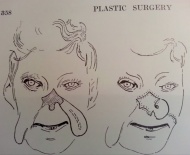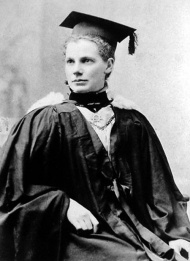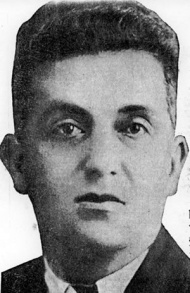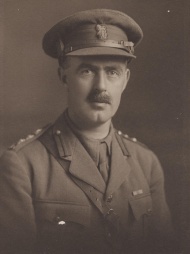Events In History
-
 19 October 1992Fred Hollows Foundation launched in New Zealand
19 October 1992Fred Hollows Foundation launched in New ZealandThe foundation was established in Australia by the Kiwi-born ophthalmologist (eye doctor) to treat eye problems in poorer countries. Within six years, 200,000 people had their sight restored through cataract surgery. Read more...
-
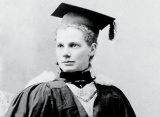 3 May 1897New Zealand's first woman doctor registered
3 May 1897New Zealand's first woman doctor registeredMargaret Cruickshank, the first female doctor registered in New Zealand, practised in Waimate, South Canterbury, until her death from influenza in 1918. Read more...
Articles
Medical Units
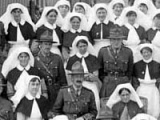
The New Zealand Expeditionary Force was supported by a broad network of medical services in the First World War
-
Page 2 – New Zealand Medical Corps
Field AmbulanceA Field Ambulance was not a vehicle but a front-line unit of around 250 personnel which treated men injured in battle.
New Zealand and Le Quesnoy
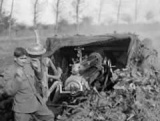
It was the New Zealand Division's final action of the First World War. On 4 November 1918, just a week before the Armistice was signed, New Zealand troops stormed the walled French town of Le Quesnoy. The 90 men killed were among the last of the 12,483 who fell on the Western Front.
- Page 4 - Battle accounts, Lieutenant AverillLeslie Cecil Lloyd Averill is best remembered for his exploits during the liberation of Le Quesnoy on 4 November
Hospital ships
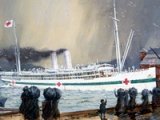
The Maheno and Marama were the poster ships of New Zealand's First World War effort. Until 1915 these steamers had carried passengers on the Tasman route. But as casualties mounted at Gallipoli, the government - helped by a massive public fundraising campaign - converted them into state-of-the-art floating hospitals.
-
Page 5 – Life on board
What was life like aboard a hospital ship? That largely depended on your job, your rank and your gender.
Armistice Day
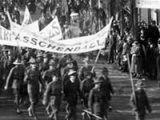
After four terrible years, fighting in the First World War finally ended with the signing of an armistice between Germany and the Allies on 11 November 1918. New Zealanders celebrated enthusiastically, despite having recently celebrated the surrenders of the three other Central Powers and the premature news of an armistice with Germany.
- Page 5 - Armistice Day and the fluThe influenza pandemic dampened some armistice celebrations, particularly in
Biographies
-
 Buck, Peter Henry
Buck, Peter Henry
Biography of doctor, politician and anthropologist Peter Buck (Te Rangi Hīroa)
Read more... -
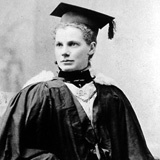 Cruickshank, Margaret Barnet
Cruickshank, Margaret Barnet
Margaret Cruickshank was the first woman to be registered as a doctor in New Zealand. She worked tirelessly during the 1918 influenza pandemic but eventually caught the disease herself and died on 28 November 1918.
Read more... -
 Featherston, Isaac Earl
Featherston, Isaac Earl
A stalwart of Wellington political life, Featherston served as provincial Superintendent and later served as a member of the House of Representatives, colonial secretary and minister without portfolio.
Read more... -
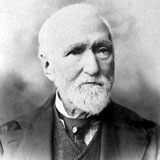 Pollen, Daniel
Pollen, Daniel
Largely forgotten today, Daniel Pollen was considered a ‘safe man’ and a good administrator. In July 1875 he took over the premiership from Sir Julius Vogel, absent in Germany, although Harry Atkinson really ran things.
Read more... -
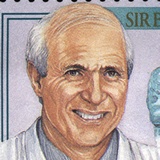 Barratt-Boyes, Brian
Barratt-Boyes, Brian
At Green Lane Hospital Barratt-Boyes pioneered new surgical techniques involving the replacement of defective heart valves.
Read more... -
 Jolly, Douglas Waddell
Jolly, Douglas Waddell
Dr Doug Jolly pioneered mobile emergency surgery during the Spanish Civil War. He is described by US medical historian David Adamas as ‘one of the most notable war surgeons of the 20th century’.
Read more...
Related keywords
- women
- armistice
- WW1
- influenza pandemic
- disease
- training camps
- health
- western front
- nurses
- hospital ships
- gallipoli campaign
- maheno (hospital ship)
- casualties
- food
- marama
- racism
- lord liverpool
- WW1 stories
- aboriginals
- new zealand medical corps
- nzef units
- premiers
- daniel pollen
- legislative council
- wellington city
- MPs
- isaac featherston
- new zealand company
- margaret cruickshank
- suffrage 125
- le quesnoy liberation
- france
- antarctica
- richard byrd
- louis potaka
- anzac
- charles begg
- spanish civil war
- douglas jolly
- Maori MPs
- peter buck
- ngati mutunga
- māori health
- waimate
- universities
- brian barratt-boyes
- famous firsts
-
Main image: Tent hospital at Ocean Beach, Gallipoli
Field hospital at Ocean Beach, Gallipoli



